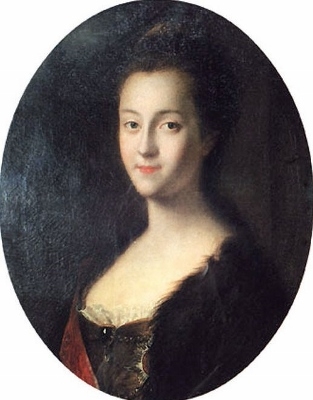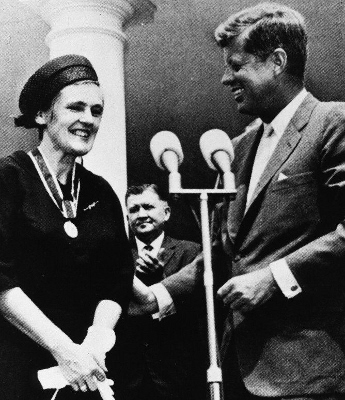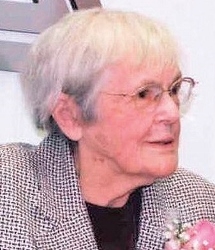Three Women who Changed Medical History
Empress Catherine II "the Great" of Russia and Smallpox (Photo Credit: www.wikipedia.com)
Born 1729, reigned 1762-1796 (her death)
What Catherine the Great did for the Russian people in 34 years of rule still influences Russia and the world today. But even if she had been a poor ruler, one act would have made her great.
In the 18th century, smallpox was a killer disease. For example: one-third of Iceland's population was wiped out, and even royalty died from the disease including Emperor Joseph I of Austria, Queen Ulrica Eleonora of Sweden and King Louis XV of France. In 1751, George Washington survived smallpox but was scarred for life. Closer to home, Empress Elisabeth's fiancé died, and Catherine's husband, Peter III, was hideously scarred.
In 1714, a Greek physician named Emanuel Timoni had published an article about preventing the disease - by infecting a healthy person with it. In 1721 Lady Mary Wortley Montagu, wife of the English ambassador to Turkey, allowed her infant son to be immunized during an epidemic, and on her return to England published and advocated the practice. The technique, called "variolation", was hotly debated throughout Europe and it was illegal in America. Immunization from live smallpox pustules invariably triggered days of fever and nausea, at the end of which the patient was either immune - or dead. However, variolation cases took a milder form and the death rate was much lower.
Catherine wanted variolation to be used in Russia, but the masses were ignorant and superstitious: fear of such an order might even have unseated Catherine herself, who had no legitimate claim to the throne. She knew her subjects needed it but her advisers knew it was too dangerous. She found a way: On October 12, 1768, Catherine the Great was inoculated by Dr. Timothy Dimsdale. She had an empire to run and was deathly afraid of the disease, but the risk was worth the ultimate benefit to her people. Her court was appalled. Her lover, Gregory Orlov, had Dr. Dimsdale inoculate him immediately afterwards, saying that if she died, he had no life anyway. (And yes: she had 21 known lovers - on a par with most male rulers of her day.)
She developed a mild case but continued working in private and returned to her duties three weeks later. As she wrote: "My objective was, through my example, to save from death the multitude of my subjects who, not knowing the value of this technique and frightened of it, were left in danger." She succeeded.
Florence Nightingale – Saving British soldiers in the Crimea (Photo Credit: www.wikipedia.com)
May 12, 1820 - August 13, 1910
Everyone knows that Florence Nightingale founded the modern nursing profession. Few know that she was an articulate writer, reformer and gifted statistician. Even fewer are aware that she waged a decades-long battle with the British military establishment in order to improve conditions for the common soldier.
Florence was born to a wealthy English family in Florence, Italy. A great-granddaughter of abolitionist William Smith, she experienced a "Christian divine calling" at the age of 17 and began caring for the poor. Taught mathematics by her father, she showed an ability to collect information, tabulate results and present them in an organized manner; material she sent Charles Villiers, President of the Poor Law Board, in 1844 influenced the reform of English Poor Laws.
At age 25 Nightingale informed her family of her decision to become a nurse and began training herself. Despite family pressure, in 1851 she refused to marry politician and poet Richard Monckton Milnes, 1st Baron Houghton, because it would interfere with her work; he remained a friend and supporter. In 1847, she met up-and-coming politician Sidney Herbert in Rome, and the two became lifelong friends. Another friend was Benjamin Jowett, English classicist, theologian and Master of Balliol College, Oxford.
While in Europe, a visit to Pastor Theodor Fliedner's institute in 1850 was a turning point: she anonymously published "The Institution of Kaiserswerth on the Rhine, for the Practical Training of Deaconesses etc." in 1851. On August 22, 1853 Nightingale became superintendent at the Institute for the Care of Sick Gentlewomen in Upper Harley Street, London. Her father had given her an annual income of £500 (roughly equivalent to £25,000/US$50,000 today), allowing her to pursue her career.
In 1854, horrific reports circulated in England about the conditions of wounded soldiers in the Crimean War, culminating in a letter in the London Times on October 14. By October 21, Nightingale and Sidney Herbert, then Secretary at War, had a staff of 38 Nightingale-trained nurses ready to leave immediately for the Crimea.
Arriving at the British base camp at Scutari, Turkey, in early November 1854, they found conditions every bit as bad as reported: overall fatigue, neglect and official indifference were causing mass infections among the troops. In fact, ten times more soldiers died from illnesses such as typhus, typhoid, cholera and dysentery than from battle wounds. The temporary barracks' hospital was even worse: overworked medical staff, few medicines, overcrowding, malnutrition, defective sewers and lack of ventilation were causing patients to die like flies. The British government had to send a Sanitary Commission to Scutari in March 1855 to get the sewers flushed out and to improve ventilation. Only then did the death rate drop sharply. In addition, the Chief Medical Officer tried to get rid of Nightingale and her nurses by stopping their food rations. Forewarned, she laid in emergency food supplies.
It was through her observations of the association between sanitary conditions and healing that the connection became recognized and established. Within six months of her arrival in Scutari, the mortality rate dropped from 42% to 2.2 %. Nightingale insisted on adequate lighting, diet, hygiene and activity. She understood that the mind and body worked together, that cleanliness was a major barrier to infection, and that it promoted healing. She established the first club where soldiers could read, write home and do something other than drinking, gambling and wenching, and helped organize a banking system so they could save or send their pay home to their families.
On her return to England, Nightingale collected evidence which showed that 17% of British peacetime recruits died in barracks from preventable diseases, a finding presented before the Royal Commission on the Health of the Army. Naturally, the British military establishment loathed her. But because she was interested in results, she learned to work behind-the-scenes with a coterie of brilliant politicians and men-of-affairs who collected around her. She also popularized the pie-chart, to present statistics in an easily understandable format, and among her many honors she was elected the first female member of the Royal Statistical Society.
But the crowning irony is located at Lower Regent Street and Pall Mall in London. In 1914, the Crimea War Memorial was moved backwards to make room for matching statues of Sidney Herbert and Florence Nightingale, standing in front of where the War Office used to be.
Dr. Frances Oldham Kelsey and the FDA (Photo Credit: www.wikipedia.com)
Dr Kelsey receives the President's Award for Distinguished Civilian Service from President John F Kennedy
Born 24 July, 1914, on Vancouver Island, BC, Canada; age 99
When Frances Kathleen Oldham received her MS in pharmacology from McGill University, she applied for a job to Dr. E.M.K. Geiling, a famous researcher starting a new pharmacology department at the University of Chicago. Geiling hired her, assuming she was a man: she accepted anyway and began work in 1936.
In 1937, the FDA retained Geiling to research unusual deaths related to "Elixir Sulfanilamide," an over-the-counter medicine. Oldham learned that some substances did not affect adults and children the same way: the 107 Elixir-related deaths, mainly children, were caused by the use of diethylene glycol as a solvent - yet the FDA could only prosecute the manufacturers for using the name "Elixir" on a non-alcoholic tonic. Following public outcry, the United States Congress passed the Federal Food, Drug, and Cosmetic Act of 1938. The same year, Oldham received a PhD in Pharmacology and joined the University of Chicago faculty.
In 1942, many pharmacologists like Oldham were looking for a synthetic cure for malaria; her research revealed that some drugs pass through the placental barrier to the embryo. In 1943 she received her MD, married fellow faculty member Dr. Fremont Ellis Kelsey, and worked on the AMA's Journal; she taught at Chicago, and later at the University of South Dakota until 1957.
In 1960, Kelsey was hired as a new-drug reviewer by the FDA in Washington, DC. She was "one of only seven full-time and four young part-time physicians reviewing drugs" for the FDA.
One of her first reviews looked easy: an application by Richardson Merrell for a new tranquilizer and painkiller called Kevadon. It had already been approved by over twenty countries in Europe and Africa, but Kelsey withheld approval because it was also to be used by pregnant women for morning sickness. She requested clinical information on its effects. She didn't get it. Kelsey kept requesting additional information. Regardless of pressure and despite her being the newest reviewer, the FDA backed Kelsey's decision: the drug was not approved for sale in the US.
An English study linked a rare nervous-system disorder to the drug; then in 1962, a high rate of abnormal birth defects in Europe was linked to mothers taking the drug during pregnancy. The generic name of the drug was – thalidomide. Of an estimated 10,000 children born in 46 countries with birth defects caused by thalidomide, only 17 were born in the US. Dr. Kelsey was hailed as a heroine for averting a major tragedy and received the President's Award for Distinguished Federal Civilian Service from President Kennedy - only the second woman recipient.
The publicity caused drug testing reforms, stalled in committee for nearly ten years, to be passed by Congress within a few months. Dr. Kelsey continued at the FDA, playing key roles in new drug testing, and shaping policy. When she retired in 2005, aged 90, the FDA had over 450 full-time reviewers.
Among many awards and signs of recognition is the "Frances Kelsey Secondary School" in her birthplace of Mill Bay, Vancouver Island, BC, Canada.
P.S. Dr Kelsy passed away at 101. See: https://en.wikipedia.org/wiki/Frances_Oldham_Kelsey











Comments